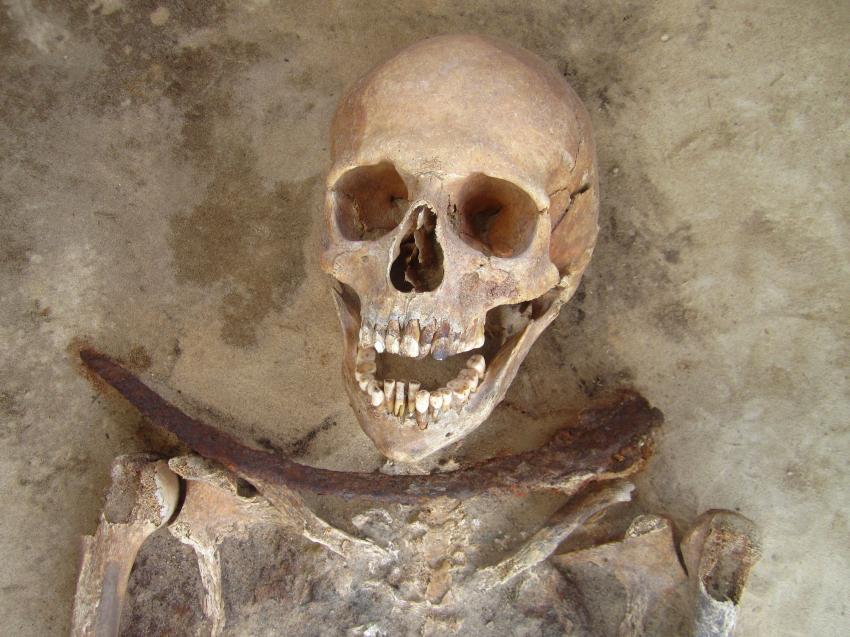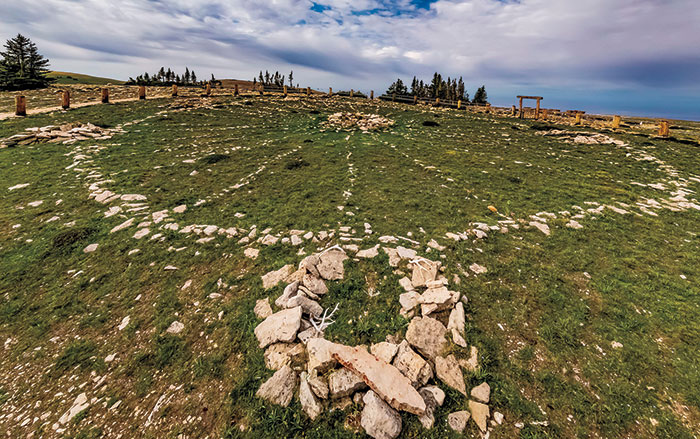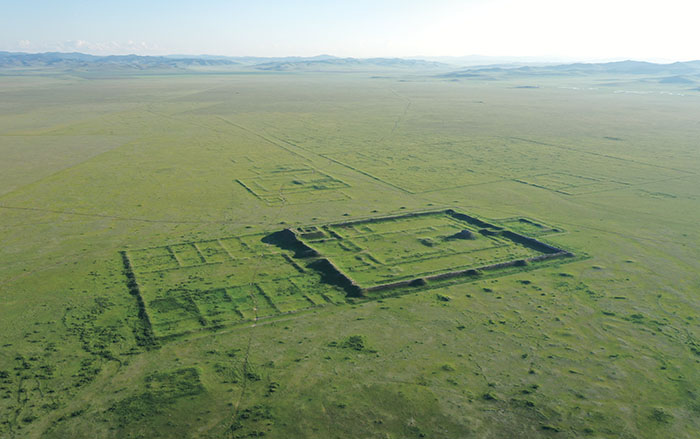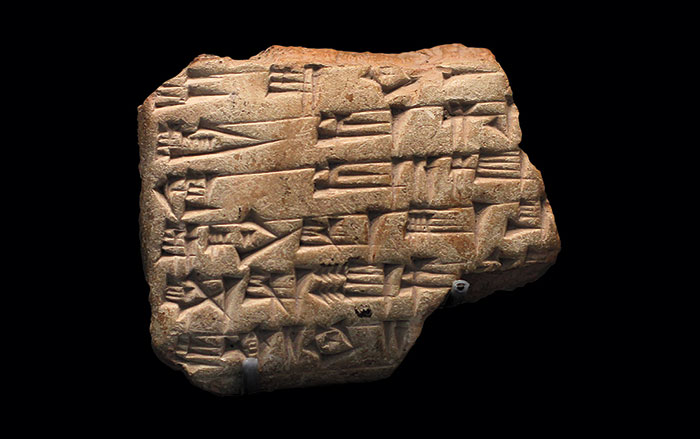
WARSAW, POLAND—Six people buried in a post-medieval cemetery in northwestern Poland with stones under their chins or sickles across their bodies, traditional means to keep reanimated corpses from biting the living, were local residents, and not newcomers to the region. A team led by bioarchaeologist Lesley Gregoricka from the University of South Alabama tested the teeth enamel from the individuals and found their strontium isotope ratios matched those of animals local to the region. These "vampire" burials were among 285 skeletons recently unearthed at the cemetery, and were not concentrated together, suggesting they were not interred at the same time. In the Slavic areas of Eastern Europe, the tradition of vampires, or reanimated corpses, dates to at least the eleventh century A.D. Folklore had it that the first person to die from an infectious disease was likely to become a vampire, and these six may have been the first to have died from repeated cholera epidemics that struck the area in the seventeenth and eighteenth centuries. "People of the post-medieval period did not understand how disease was spread, and rather than a scientific explanation for these epidemics, cholera and the deaths that resulted from it were explained by the supernatural—in this case, vampires,” Gregoricka told Phys.org. To read more about the archaeology of vampires, see “Plague Vampire Exorcism.”










